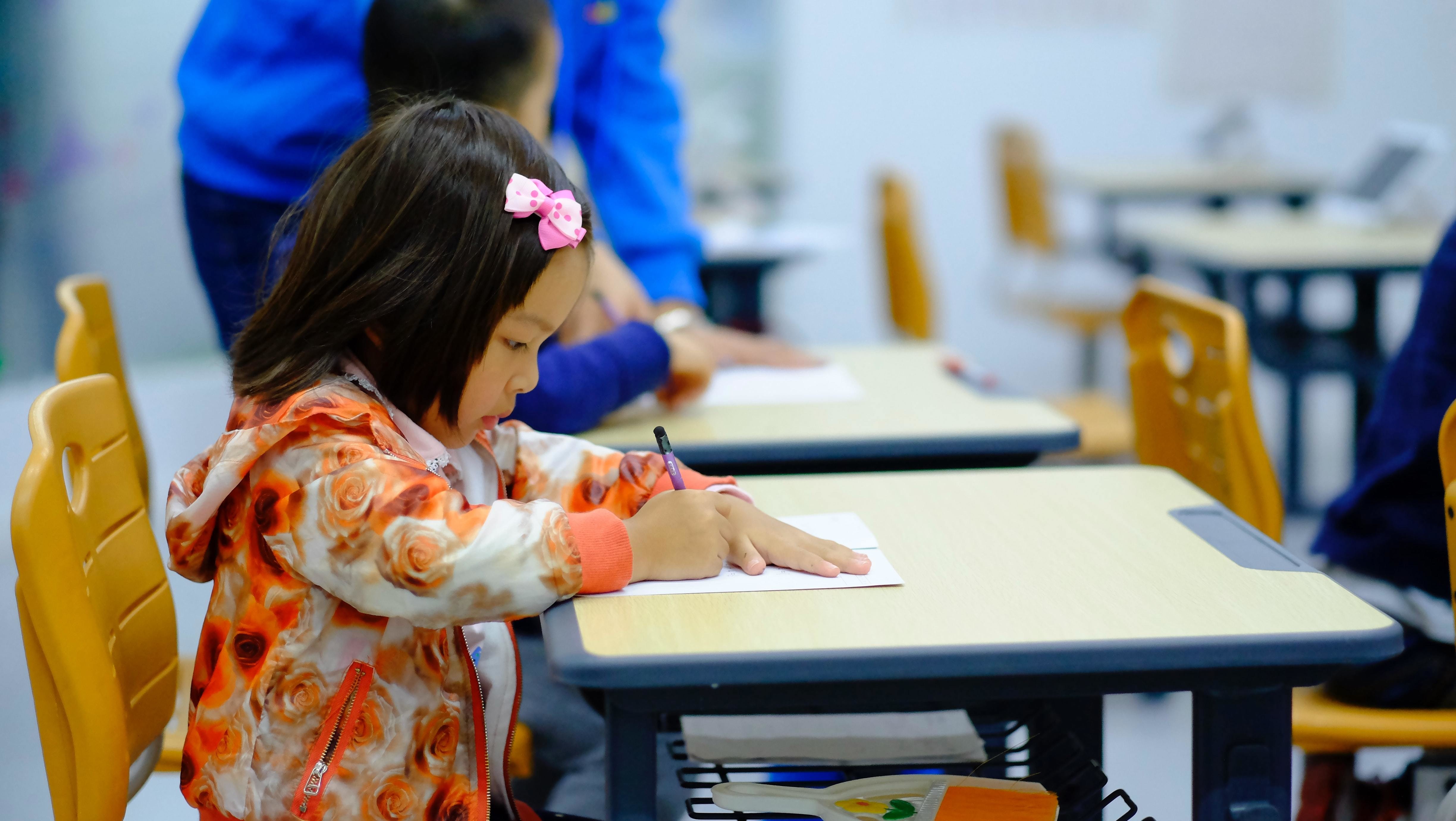The global education crisis is even worse than we thought. Here's what needs to happen

School closures have halted many children's education.
Image: Jerry Wang/Unsplash
Gwang Chol Chang
Chief of Education Policy Section, Division of Policies and Lifelong Learning Systems, UNESCO Education SectorBorhene Chakroun
Director, Division for Policies and Lifelong Learning Systems, UNESCO Education SectorStay up to date:
Pandemic Preparedness and Response
- Students now risk losing $17 trillion in lifetime earnings in present value, or about 14% of today’s global GDP, because of COVID-19-related school closures and economic shocks.
- Results from global simulations of the effect of school closures on learning are now being corroborated by country estimates of actual learning losses.
- There are a number of steps that can be taken to reverse learning losses.
In our recent The State of the Global Education Crisis: A Path to Recovery report (produced jointly by UNESCO, UNICEF, and the World Bank), we sounded the alarm: this generation of students now risks losing $17 trillion in lifetime earnings in present value, or about 14 percent of today’s global GDP, because of COVID-19-related school closures and economic shocks. This new projection far exceeds the $10 trillion estimate released in 2020 and reveals that the impact of the pandemic is more severe than previously thought.
The pandemic and school closures not only jeopardized children’s health and safety with domestic violence and child labor increasing, but also impacted student learning substantially. The report indicates that in low- and middle-income countries, the share of children living in Learning Poverty – already above 50 percent before the pandemic – could reach 70 percent largely as a result of the long school closures and the relative ineffectiveness of remote learning.
Unless action is taken, learning losses may continue to accumulate once children are back in school, endangering future learning.
Severe learning losses and worsening inequalities in education
Results from global simulations of the effect of school closures on learning are now being corroborated by country estimates of actual learning losses. Evidence from Brazil, rural Pakistan, rural India, South Africa, and Mexico, among others, shows substantial losses in math and reading. In some low- and middle-income countries, on average, learning losses are roughly proportional to the length of the closures—meaning that each month of school closures led to a full month of learning losses (Figure 1, selected LMICs and HICs presents an average effect of 100% and 43%, respectively), despite the best efforts of decision makers, educators, and families to maintain continuity of learning.
However, the extent of learning loss varies substantially across countries and within countries by subject, students’ socioeconomic status, gender, and age or grade level (Figure 1 illustrates this point, note the large standard deviation, a measure which shows data are spread out far from the mean). For example, results from two states in Mexico show significant learning losses in reading and in math for students aged 10-15. The estimated learning losses were greater in math than reading, and they disproportionately affected younger learners, students from low-income backgrounds, and girls.

While most countries have yet to measure learning losses, data from several countries, combined with more extensive evidence on unequal access to remote learning and at-home support, shows the crisis has exacerbated inequalities in education globally.
- Children from low-income households, children with disabilities, and girls were less likely to access remote learning due to limited availability of electricity, connectivity, devices, accessible technologies as well as discrimination and social and gender norms.
- Younger students had less access to age-appropriate remote learning and were more affected by learning loss than older students. Pre-school-age children, who are at a pivotal stage for learning and development, faced a double disadvantage as they were often left out of remote learning and school reopening plans.
- Learning losses were greater for students of lower socioeconomic status in various countries, including Ghana, Mexico, and Pakistan.
- While the gendered impact of school closures on learning is still emerging, initial evidence points to larger learning losses among girls, including in South Africa and Mexico.
As a result, these children risk missing out on much of the boost that schools and learning can provide to their well-being and life chances. The learning recovery response must therefore target support to those that need it most, to prevent growing inequalities in education.
Beyond learning, growing evidence shows the negative effects school closures have had on students’ mental health and well-being, health and nutrition, and protection, reinforcing the vital role schools play in providing comprehensive support and services to students.
Critical and Urgent Need to Focus on Learning Recovery
How should decision makers and the international community respond to the growing global education crisis?
Reopening schools and keeping them open must be the top priority, globally. While nearly every country in the world offered remote learning opportunities for students, the quality and reach of such initiatives varied, and in most cases, they offered a poor substitute for in-person instruction. Stemming and reversing learning losses, especially for the most vulnerable students, requires in-person schooling. Decision makers need to reassure parents and caregivers that with adequate safety measures, such as social distancing, masking, and improved ventilation, global evidence shows that children can resume in-person schooling safely.
Have you read?
But just reopening schools with a business-as-usual approach won’t reverse learning losses. Countries need to create Learning Recovery Programs. Three lines of action will be crucial:
1. Consolidating the curriculum – to help teachers prioritize essential material that students have missed while out of school, even if the content is usually covered in earlier grades, to ensure the curriculum is aligned to students’ learning levels. As an example, Tanzania consolidated its curriculum for grade 1 and 2 in 2015, reducing the number of subjects taught and increasing time on ensuring the acquisition of foundational numeracy and literacy.
2. Extending instructional time – by extending the school day, modifying the academic calendar to make the school year longer, or by offering summer school for all students or those in need. In Mexico, the Ministry of Public Education announced planned extensions to the academic calendar to help recovery. In Madagascar, the government scaled up an existing two-month summer “catch-up” program for students who reintegrate into school after having left the system.
3. Improving the efficiency of learning – by supporting teachers to apply structured pedagogy and targeted instruction. A structured pedagogy intervention in Kenya using teachers guides with lesson plans has proven to be highly effective. Targeted instruction, or aligning instruction to students’ learning level, has been successfully implemented at scale in Cote D’Ivoire.
Finally, the report emphasizes the need for adequate funding. As of June 2021, the education and training sector had been allocated less than 3 percent of global stimulus packages. Much more funding will be needed for immediate learning recovery if countries are to avert the long-term damage to productivity and inclusion that they now face.
Learning Recovery as a Springboard to an Accelerated Learning Trajectory
Accelerating learning recovery has benefits that go well beyond short-term gains: it can give children the necessary foundations for a lifetime of learning, and it can help countries increase the efficiency, equity, and resilience of schooling. This can be achieved if countries build on investments made and lessons learned during the crisis—most notably, with a focus on six areas:
1. Assessing student learning so instruction can be targeted to students’ learning levels and specific needs.
2. Investing in digital learning opportunities for all students, ensuring that technology is fit for purpose and focused on enhancing human interactions.
3. Reinforcing support that leverages the role of parents, families, and communities in children’s learning.
4. Ensuring that teachers are supported and have access to practical, high-quality professional development opportunities, teaching guides and learning materials.
5. Increasing the share of education in the national budget allocation of stimulus packages and tying it to investments mentioned above that can accelerate learning.
6. Investing in evidence building - in particular, implementation research, to understand what works and how to scale what works to the system level.
It is time to shift from crisis response to learning recovery. We must make sure that investments and actions for learning recovery lay the foundations for more efficient, equitable, and resilient education systems—systems that truly deliver learning and well-being for all children and youth. Only then can we ensure learning continuity in the face of future disruption.
Accept our marketing cookies to access this content.
These cookies are currently disabled in your browser.
Don't miss any update on this topic
Create a free account and access your personalized content collection with our latest publications and analyses.
License and Republishing
World Economic Forum articles may be republished in accordance with the Creative Commons Attribution-NonCommercial-NoDerivatives 4.0 International Public License, and in accordance with our Terms of Use.
The views expressed in this article are those of the author alone and not the World Economic Forum.
Related topics:
Forum Stories newsletter
Bringing you weekly curated insights and analysis on the global issues that matter.
More on Education and SkillsSee all
Rawan bint Najeeb Tawfeeqi
August 11, 2025
Neeti Mehta Shukla
August 1, 2025
Naoko Tochibayashi
July 30, 2025
Lisa Bechtold
July 29, 2025
Veronica Frisancho
July 22, 2025
Sasha Havlicek and Daniel Dobrygowski
July 21, 2025





